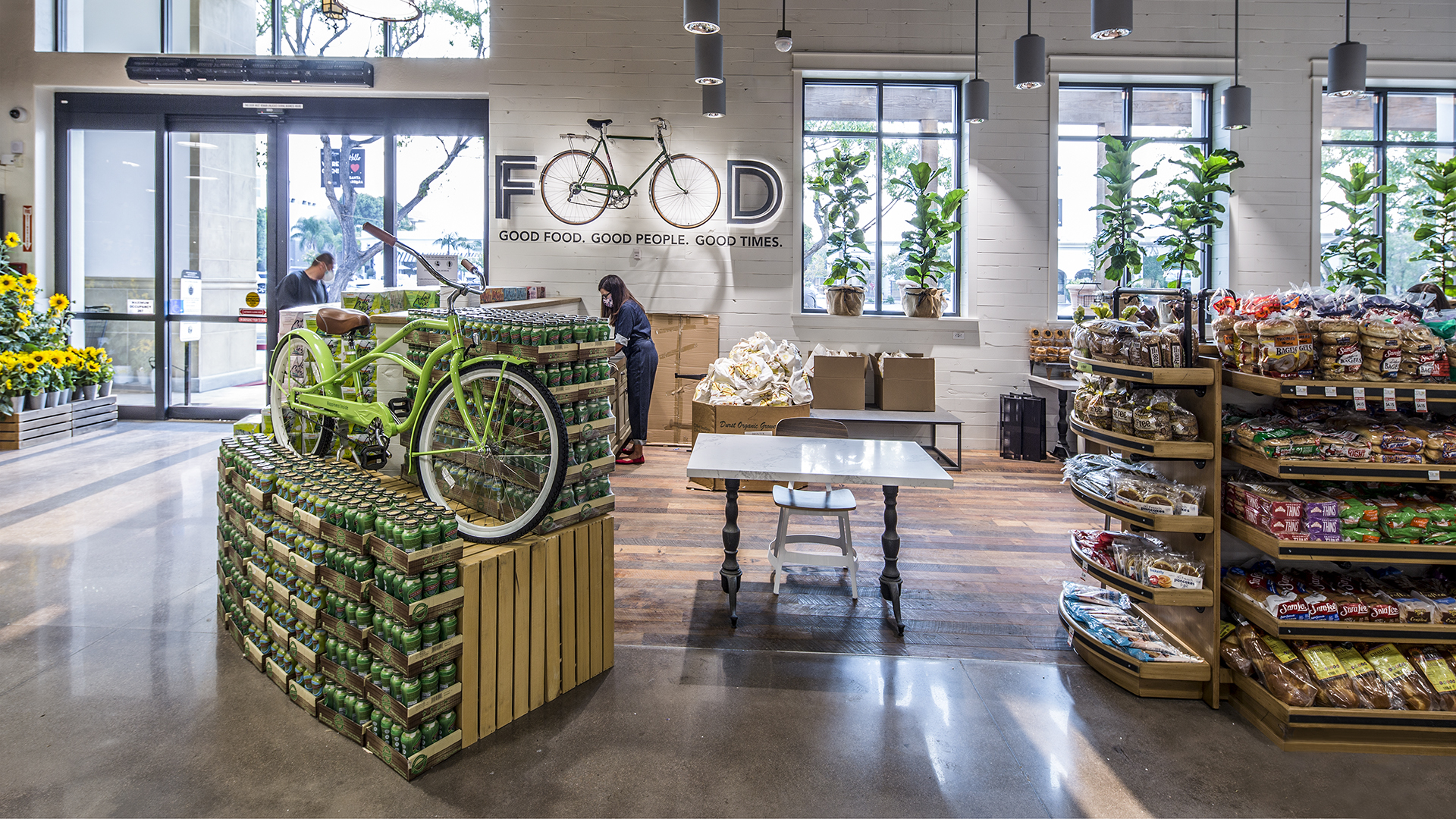In the world of supermarket design, one thing is certain: change happens. Over the past few decades, grocery stores and supermarkets have mastered the art of adaptation. A prime example is the continuous evolution of the leasable areas at the front end of many stores. This “extra space” undergoes constant redesign and reinvention to align with the shifting demands of customers and the broader market landscape.
THE EVOLUTION OF THE FRONT END SPACE
Once upon a time, you might have been greeted by a photo printing center upon entering the grocery. However, the rise of smartphones, cloud storage, and social media platforms like Facebook, Tumblr, and Instagram diminished the need for this service. Similarly, as synthetic fabrics improved and our everyday wardrobes evolved from dress wear to more business-casual attire, the drycleaning drop-shops that replaced the photo printing centers also declined. This paved the way for bank branches to move in, offering additional services and convenience, followed quickly by the Red Box DVD rental era. Now, cafés and coffee brands are popular, due to brands like Starbucks, Caribou, and Peete’s Coffee elevating product quality and enhancing the overall shopping experience for customers.
CURRENT CHALLENGES AND OPPORTUNITIES
Front end “extra spaces” are in a disadvantaged position and suffer from emotional barriers relative to shoppers’ state of mind. For instance, on their way into the store, shoppers may be “mission-oriented” in purpose and gate—their mission too great to be distracted by offerings like stuff, shops, or vendors in the front end leasable spaces. Being too early is as bad as being too late. Too early is an emotional measure reflecting the guests’ focus on higher priorities. And, yes, it is also a spatial consideration.
It’s long established that shoppers arrive with two things: a big list and a little time. Successful trips are when they get all the items on their list and do so in their allotted time. Time is the controlling variable. What will they accomplish first: filling their basket or exhausting their time? Let’s be real—there is no coupon so valuable as to offset being 10 minutes late to pick up at daycare. Despite leaving the store feeling accomplished, shoppers may find themselves even more pressed for time than when they entered.
What’s interesting is how Starbucks transcends the constraints of shoppers’ mindsets. This is because of its powerful draw, driven by two key factors: disruptive newness and delightful sameness. Starbucks constantly introduces new and seasonal drinks, like the cult favorite Pumpkin Spice Latte and this season’s Spicy Lemonade Refresher, creating excitement and freshness. Yet, it also maintains consistency with its standards, which people love. This allure is so compelling that grocers grant Starbucks prime front end space. Yet, Starbucks strategically chooses its locations, adding to its mystique by being selective about where it operates.
In addition to cafés and coffee shops, supermarkets have doubled down on convenience, utilizing front end space to support online grocery orders. Since the COVID-19 pandemic, online shopping has surged, and this space now accommodates equipment and infrastructure essential for seamless online shopping operations. Yet, even as grocery pick-up and delivery are growing, one cannot help but wonder: what productive use of this space lies ahead?
CONSIDERATIONS FOR NEW FRONT END LEASING TENANTS & PARTNERS
Envisioning the future of this front end space takes study specific to each banner and neighborhood. Our curiosity is guided by examining current shopper preferences and observing successful strategies from other retailers—even those outside the grocery sector. By taking this broader perspective, we can identify strategies to elevate the supermarket shopping experience and stay ahead of the curve. While these approaches may be innovative, they must be productive. When considering potential leasing tenants and partners, keep these points in mind:
Aim for a Triple-Win Approach
It’s important to prioritize the guests’ benefits when forming a partnership. After that, the tenant brand should be considered, followed by the grocery store. Customers win from the convenience offered by nearby essential services, and the brand flourishes in a proven-to-succeed retail location accessible to potential customers. The supermarket succeeds from the heightened foot traffic and increased sales of other products within the store.
Frequency Equals Relevance
Frequently visited brands are usually the ones most relevant to consumers. Think about all the brands you encounter daily. There might be a lot, but how many do you think about regularly? Potential partner brands can be classified as things customers desire (aspirational) or require (need-based). It’s crucial to assess whether the brand’s offerings revolve around continuous maintenance or involve consumable products that necessitate regular replenishment. Given the essential nature of grocery, retail partners focused on delivering need-based products or services have a higher potential for success.
Opt for Brands that Inspire and Project Trust
While startups and growing chains may lack a well-established reputation, they can offer new, fresh services and products to shoppers—and make for reliable tenants. Today, burgeoning brands don’t need hundreds of locations to be trusted. They need great trade dress comprising the visual elements that signal reliability. This includes clean and professional design, consistent branding, high-quality materials, clear brand messaging and a respectable digital footprint, such as a website and social media presence. These aspects are crucial in making that first and potentially lasting impression.
WHAT’S NEXT… NEXT?
No one can truly predict the future. But, for now, as supermarkets navigate the changing terrain, the potential for partnerships and leasing arrangements presents an opportunity for mutual benefit. By prioritizing a triple-win approach that considers the needs of guests, brands, and the store itself, supermarkets can create spaces that enhance the overall shopping experience while driving increased foot traffic and sales. Looking ahead, the possibilities for further evolution are limitless, with creativity and inspiration from both within and beyond the industry leading the way forward.
Heather Nifong contributed to this article.

